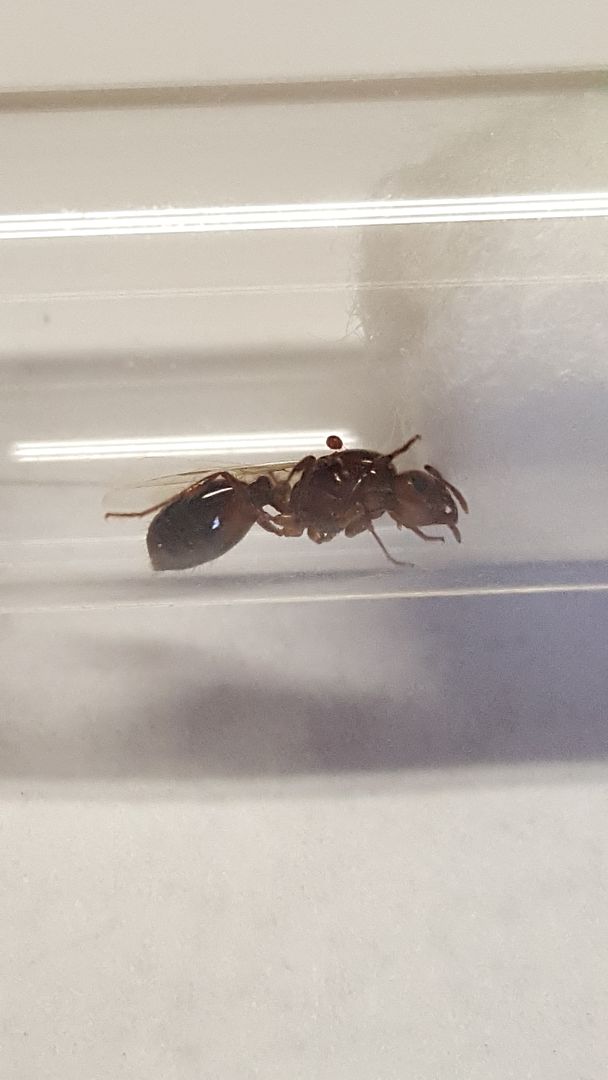I stumbled across this girl today. My main question is how can I tell if she's gravid? I'm fairly certain she's Solenopsis Invicta since they are plentiful here. Ill fill out all the info as requested below. Thanks!
Location - Bogalusa, Louisiana, USA
Date - Nov. 4, 2015
1. She was collected by happenstance in my back lawn. Its been raining for days here and today is the first sunny day. I was on the cell, looked down, and there she was.
2. Collected on 11-4-2015
3. Habitat - lawn
4. Length - I could only measure standard (3/8ths inch) converted is approximately 9mm.
5. Coloration - Deep red head and thorax, and nearly black abdomen. Shiny.
6. Notes - She is in the test tube now, but even before I put her in there she was lethargic. She would only move around if I prodded at her a bit. Otherwise once she found a spot she liked she would remain still. I hope she is gravid.
Are those small balls a parasite? Will that kill her?




















